
You’ve created your packing checklist, and booked a moving company, but have you devised a strategy for how you’ll handle your pets?
Pet owners share a deep connection with their paw-buddies. As we know already our cuddly and winged companions thrive on routines, and moving can be a major disruption to them. Rest assured, there are measures that you can adopt to ensure that your pets handle the upheaval of moving as smoothly as possible.
Having a thoughtfully planned approach will alleviate your concerns amidst the stress of packing and relocating your household, making the move smoother for everyone involved.
Pet Care Tips to Simplify Your Move
1. Familiarize Your Pet with Packing Materials and Boxes
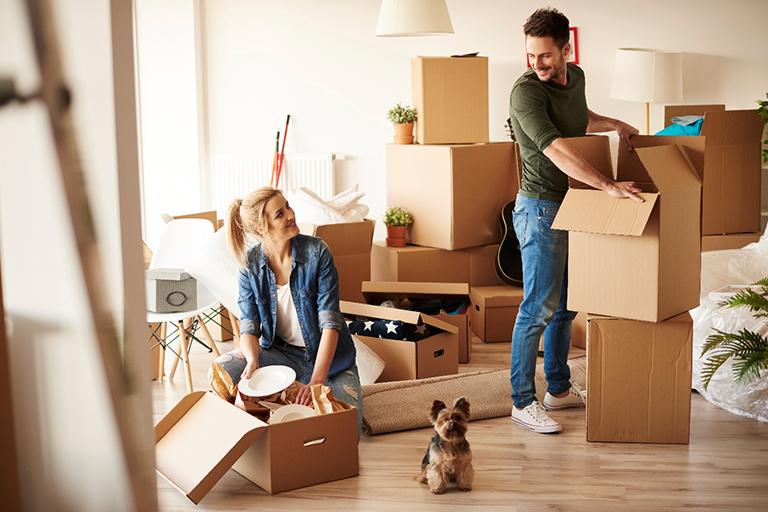
Numerous pets find delight in playing with packing supplies—who doesn’t relish the endless joy of an empty box or crinkly tissue paper? To acclimate your pets to the presence of boxes, start packing in advance.
If you have space, start accumulating boxes a few weeks before the move. Pack away less frequently used items and leave the boxes open. Initially, your pets might be curious, but soon they’ll barely notice them.
This pre-conditioning minimizes disturbances and box explorations as moving day draws near, and the packing accelerates.
2. Maintain Routine Consistency to Reduce Your Pet’s Stress.
Pets, particularly dogs and cats, thrive on habitual patterns. The greater the alteration in your schedule, the higher your anxiety can climb.
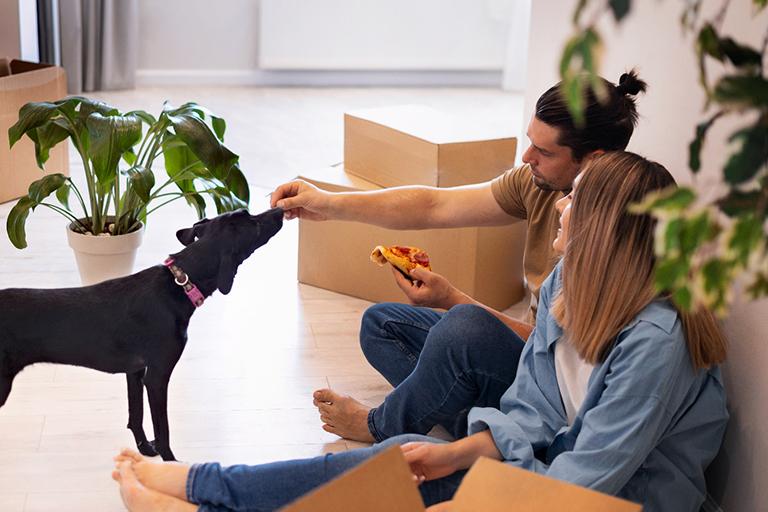
While it might be tempting to forego regular routines with your pets during intensive packing or task organisation, the slight disruption at this stage will translate into a happier pet in the long run.
To control your pet’s stress levels in the weeks leading up to the move (and on moving day, if possible), ensure you do the following:
a. Stick to regular feeding times.
b. Uphold the usual walk and play sessions.
c. Offer extra affection and patience; the experience is stressful for them too.
3. Keep Your Pets Entertained
You’ll be occupied during the move, but setting aside extra moments to engage and exercise your pets is crucial. An excellent antidote to stress is expending that anxious energy. A tired pet is composed, contributing to a more tranquil move for everyone.

If time is tight for extra walks or playtimes, contemplate enlisting a friend to assist or take your furry companion outdoors for playdates. Canine walking services are also beneficial for providing your dog with exercise and a reprieve from a bustling household. Check with other pet parents in your locale to find dependable dog walkers near you.
Consider employing mental challenges through puzzle toys, sniffing mats, etc, to engage your pet further. This will deter boredom-driven misbehavior and grant you time to focus on other obligations.
4. Allocate a Comfortable, Secluded Space for Your Pet
Amidst the move, boxes, disassembled furniture, and heaps of clothes, your once-organized home can rapidly devolve into chaos. While some disarray is inevitable, preserving at least one tranquil and comfortable area for your pet throughout the move will be crucial for their contentment.
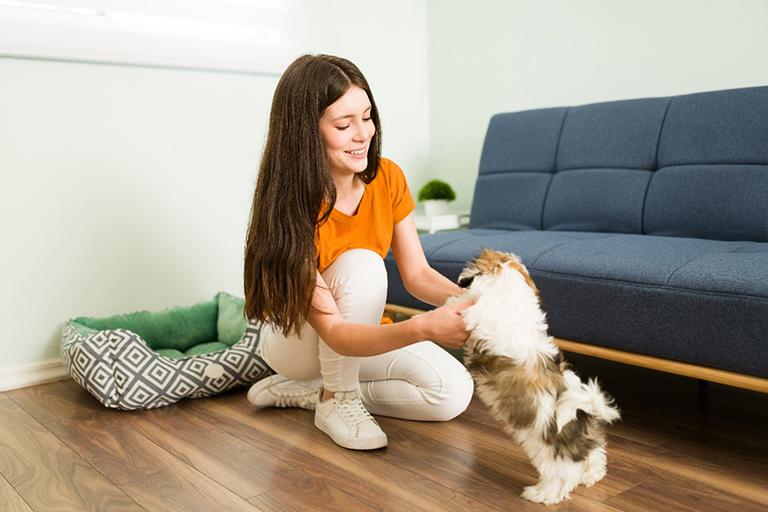
Whether it’s a small room, a corner, or even an open closet, having a retreat when the commotion becomes overwhelming is necessary, particularly for cats and dogs.
In an ideal case, you should consider having a friend, family member, or trusted kennel care for your pet for a couple of days while you execute the actual move. However, this might not always be feasible. If your pets are accompanying you during the move, make it your topmost priority to prepare their space upon arriving at your new home. Position their bedding, enclosure, or crate in a cozy location that’s away from the hustle and bustle yet not so distant that they feel isolated. The goal is to prevent them from sensing abandonment in an unfamiliar environment.
For dogs and cats, consider placing them in a room with a closable door during the move-out and move-in process. Since the front door will likely be left open frequently while transferring your belongings, you need to make sure that they are not taking it as an escape.
5. Consult Your Veterinarian
Veterinarians possess extensive insight into assisting pets in handling stressful situations, particularly since most pets aren’t fond of veterinary visits! They are a valuable resource for inquiries concerning handling your pet’s anxiety.
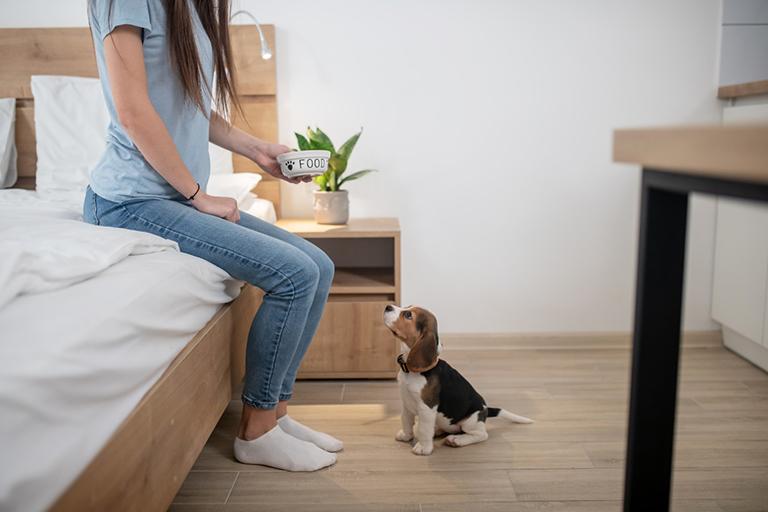
Booking a veterinary appointment a few weeks before your move is advisable. This way, you can:
• Confirm up-to-date vaccinations and obtain a current rabies vaccination certificate if necessary.
• Ensure your pet is healthy and equipped with any regular medications, reducing the likelihood of needing an emergency visit during your busiest period.
• Discuss potential anxiety-alleviating techniques or supplements.
• Request copies of your pet’s medical records if you’re relocating beyond your current locality and require a new veterinarian.
• Seek recommendations for a new veterinarian if you haven’t located one in your new community.
6. Familiarise Yourself with the Pet Regulations
Being unaware of your new locale’s leash and pet laws can lead to unwelcome surprises. Conduct thorough research beforehand to anticipate potential regulations. If you’re moving into a new rental property, grasp the pet-related prerequisites outlined in your lease to avoid unpleasant surprises upon arrival. Even if you’re moving into a new society or township, it’s better to go through the regulations made by the reigning resident’s committee.

Before you move, consider updating your pet’s identification tags. If your pet has a microchip, ensure their information is current online.
7. Safeguard Your Pet and Maintain Their Proximity for Safety
The doors will be ajar throughout the moving process, and people will traverse in and out. Ensuring your pet’s security prevents them from darting away due to fear or confusion. Place them in a kennel in a quiet section of the house or within a closed-off room.
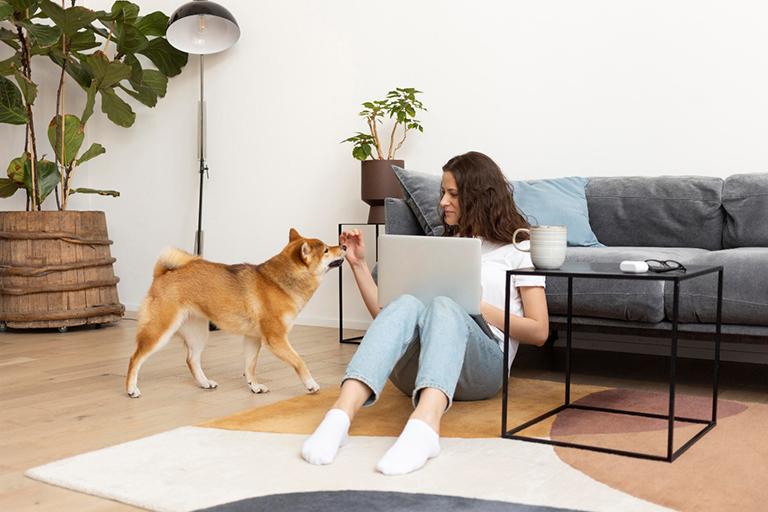
Avoid leaving your dog unattended in the new backyard during the move-in phase. Possessing a current photo of your pet, along with updated tags, a geotagged collar and microchip information can be invaluable if they were to escape.
8. Assemble a Dedicated Emergency Bag for Your Pet During the Move
Alleviate stress for yourself and your pet by readily making all their necessities available. Water bowls, beloved toys, a blanket, food, treats, litter, and more are essential items to include.
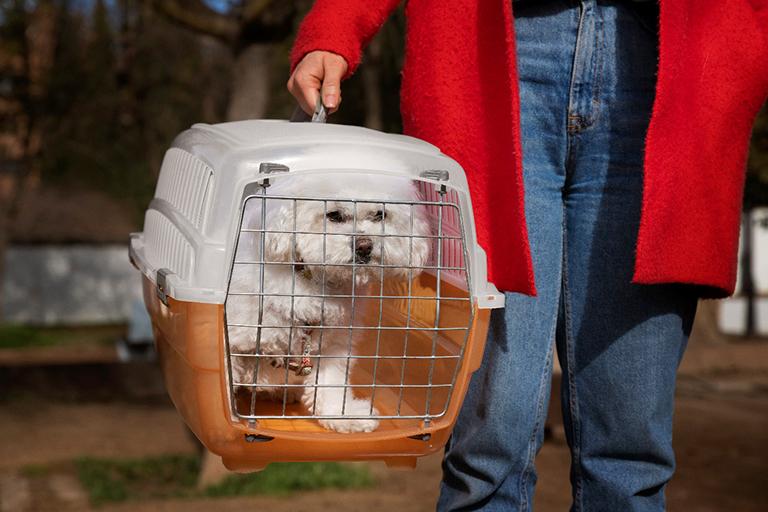
Remember to pack paper towels and disposable bags for unanticipated clean-ups.
9. Ready Your Pet for Secure Travel in Your Vehicle
The optimal position for your pet is in the backseat, secured with a seatbelt in their crate or carrier. Ensure seatbelts are firmly fastened to prevent accidents, and remove any loose items or boxes that could tumble and strike your pet. If you think it will alleviate their anxiety, you can drape a blanket over their crate or carrier to minimize visual stimulation (important for birds).
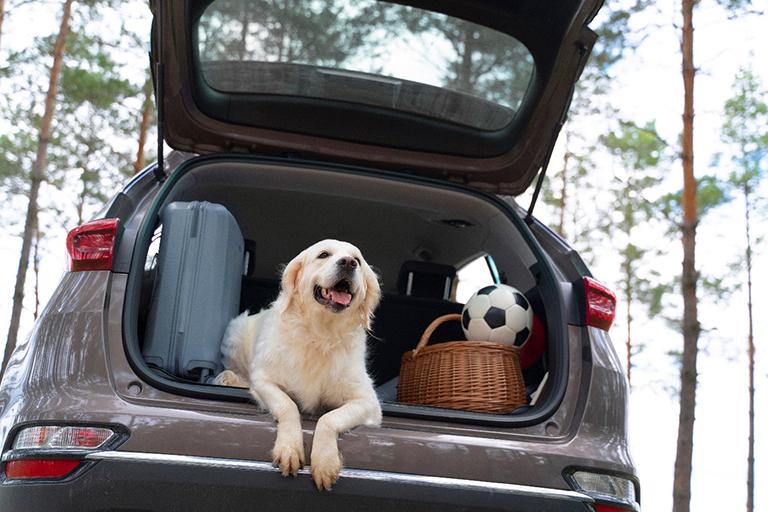
Familiarising your pet with the crate or carrier before travel is crucial. This will make it a secure and comfortable travel space. Consider taking them on a few test drives beforehand to get them used to car travel and handling the unfamiliarity.
10. Safeguard Your New Home for Your Pet’s Arrival
A fresh living space can introduce unforeseen hazards for your pet. Stick to these guidelines to ensure their safety in their new environment:
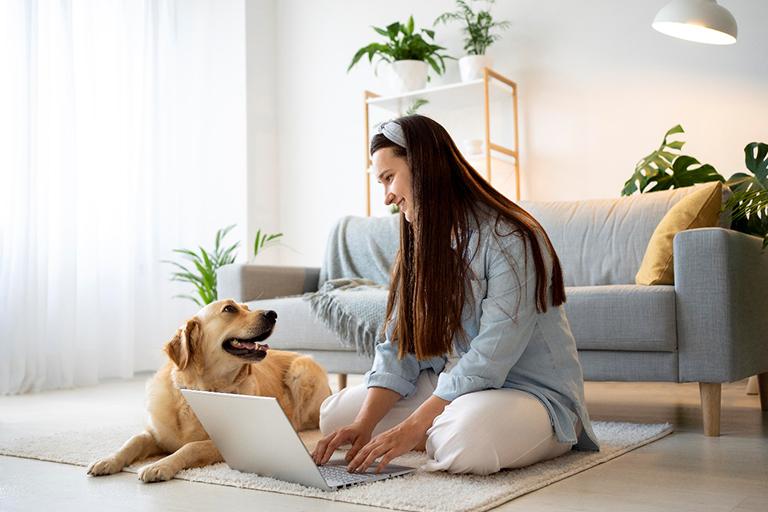
- Reinforce screens, windows, gates, and doors
- If you have a balcony, confirm it’s inaccessible for your pet to squeeze through or leap over the railing.
- Survey outdoor fences for potential escape routes.
- Verify that all vents are covered.
- Close toilet lids to prevent small pets from falling in and dogs from consuming potentially harmful water.
- Examine for any residual pest control traps or poison.
- Recognize that certain plants can be toxic, so eliminate or isolate any threatening plants from the vicinity.
- Beyond the apparent hazards, be cautious of items like mothballs and electrical cords that can jeopardise your pet’s safety.
Parting Thought

Remember that dogs, particularly when anxious, might resort to chewing. You should proactively supply them with plenty of chew toys and dental chews to divert them from less desirable alternatives (like your shoes or electrical cords).
Aim to maintain a clean, clutter-free environment to lessen the likelihood of your pet encountering harmful substances.
By adhering to these guidelines, you’ll enhance the comfort and well-being of your pets during the moving process, giving all involved a smoother transition.
Check out our website to learn more about the best real estate company in Hyderabad– Auro Realty our latest projects come equipped with pet-friendly aras and dedicated pet parks, real estate investment tips, home decor ideas and more.




